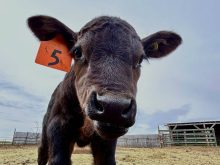Keith Castonguay, Manitoba Farm Safety Program director, says walkabouts are critical to catch combine blockages before they heat up and catch fire.
“When you shut the machine off, you walk around looking for hot spots or any accumulated chaff that you might have there that might pose a problem,” he said.
Combine fires are a common risk during harvest, when straw blockages in the engine can cause the engine to overheat, underlubricated bearings can heat, sparking a blaze in the crop residue passing through the combine or crop residue inside the machine can spontaneously combust, driven by the dry, fine dust, spilled oil and built-up static electricity and heat.
Read Also

Reaction rolls in on Health Canada dicamba restriction proposal
Spray expert says proposed dicamba rule change would ban ‘over the top’ use of the herbicide
Manitoba’s Office of the Fire Commissioner also advises farmers to:
- Inspect machinery before running it;
- Avoid running machinery in wet areas since wet plant material is more likely to get clogged then dry out due to engine heat and catch alight;
- Carry at least one fire extinguisher along with a collapsible shovel and pail in farm equipment; and
- Avoid driving in “long cured grasses.”
Manitoba’s Office of the Fire Commissioner is not aware of any on-farm fire extinguisher standards, although it recommends at least a five-pound ABC extinguisher, which uses dry chemicals and is cleared for all three classes of fire ranging from trash and wood to grease and electrical fires.
“One thing I wish we would’ve had is fire extinguishers in the trucks,” Meg Reynolds, a Saskatchewan producer whose combine caught flame earlier last month, said. “Not that they would’ve done much for the combine, but I didn’t even grab the water one as I was getting off the combine because it was right there and I was trying to get off as fast as possible and I just knew it wasn’t going to help me with much. It was 20 seconds of water. That wasn’t going to help do anything with the combine or the field.”
In reality, Castonguay said, equipment manufacturers usually publish their own fire safety standards and recommendations, although those standards vary.
The safety program director says he has had sales people recommend a 20-pound extinguisher in the field.
“I discussed this with the fire inspectors and they said this would be impractical because of both size and weight,” he said. “We discussed 10 pounds as a compromise and they thought that was OK, but their recommendation was still the five-pounder.”
Castonguay added that the Office of the Fire Commissioner feels any fire needing more than a five-pound extinguisher should be handled by trained firefighters.
Morag Majerison, safety adviser with Keystone Agricultural Producers, reported that two machinery dealerships in Brandon both recommended a five-pound extinguisher in all tractors and a 10-pound extinguisher in the combine.
Producer Chuck Fossey, however, would like an even more stringent bar. Fossey suggests that each combine contain two extinguishers, one near the cab and one near the engine.
Fossey stressed that regular cleaning, including any spilled oil, may lower the fire risk, as well as checking bearings and regularly greasing equipment to avoid friction. A number of producers have installed their own miniature reservoirs to use in case of field fires.















